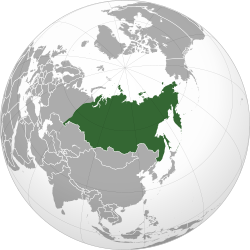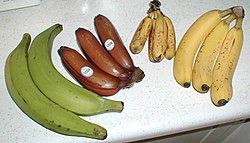Template:Transclude random excerpt/testcases
| This is the template test cases page for the sandbox of Template:Transclude random excerpt. to update the examples. If there are many examples of a complicated template, later ones may break due to limits in MediaWiki; see the HTML comment "NewPP limit report" in the rendered page. You can also use Special:ExpandTemplates to examine the results of template uses. You can test how this page looks in the different skins and parsers with these links: |
Random cricket article from list
[edit]If it's always Cricket bat, be suspicious!
| {{Transclude random excerpt}} | {{Transclude random excerpt/sandbox}} |
|---|---|
 | Lua error in Module:Excerpt/portals/sandbox at line 393: bad argument #1 to 'ipairs' (table expected, got nil). |
Random article from a list that's mainly rubbish
[edit]Should always be Cat or Dog
| {{Transclude random excerpt}} | {{Transclude random excerpt/sandbox}} |
|---|---|
| Untitled may refer to: (Full article...) | Untitled may refer to: (Full article...) |
Random article from a list that's totally rubbish
[edit]Error: no valid article
| {{Transclude random excerpt}} | {{Transclude random excerpt/sandbox}} |
|---|---|
| Untitled may refer to: (Full article...) | Untitled may refer to: (Full article...) |
All articles
[edit]| {{Transclude random excerpt}} | {{Transclude random excerpt/sandbox}} | ||
|---|---|---|---|
A banana is an elongated, edible fruit—botanically a berry—produced by several kinds of large treelike herbaceous flowering plants in the genus Musa. In some countries, cooking bananas are called plantains, distinguishing them from dessert bananas. The fruit is variable in size, color and firmness, but is usually elongated and curved, with soft flesh rich in starch covered with a peel, which may have a variety of colors when ripe. It grows upward in clusters near the top of the plant. Almost all modern edible seedless (parthenocarp) cultivated bananas come from two wild species – Musa acuminata and Musa balbisiana, or hybrids of them. (Full article...)  | Lua error in Module:Excerpt/portals/sandbox at line 393: bad argument #1 to 'ipairs' (table expected, got nil). |
Template in image caption not processed correctly
[edit]Caption should be:
Right to left:
- The Capture of the 'Nuestra Señora de Covadonga' (20 April 1743)
- The Battle of Fontenoy (11 May 1745)
- The Battle of Hohenfriedberg (4 June 1745)
- The Siege of Bergen op Zoom (14 July – 18 September 1747)
Actual caption shows asterisks:
| {{Transclude random excerpt}} | {{Transclude random excerpt/sandbox}} |
|---|---|
|
The War of the Austrian Succession, 1740 to 1748, was a European Great Power conflict fought primarily in Europe, the Atlantic Ocean and Mediterranean Sea. Related conflicts include King George's War in North America, the War of Jenkins' Ear, the First Carnatic War, and the First and Second Silesian Wars. Its pretext was the right of Maria Theresa to succeed her father, Emperor Charles VI, as ruler of the Habsburg monarchy. France, Prussia, and Bavaria saw it as an opportunity to challenge Habsburg power, while Maria Theresa was backed by Britain, the Dutch Republic, and Hanover, collectively known as the Pragmatic Allies. As the conflict widened, it drew in other participants, among them Spain, Sardinia, Saxony, Sweden, and Russia. (Full article...) | Lua error in Module:Excerpt/portals/sandbox at line 393: bad argument #1 to 'ipairs' (table expected, got nil). |
Another image caption problem
[edit]Image caption should be:
Administrative Siberian Federal District
Geographic Siberia
North Asia, greatest extent of Siberia
Actual caption does not display:
| {{Transclude random excerpt}} | {{Transclude random excerpt/sandbox}} |
|---|---|
 | Lua error in Module:Excerpt/portals/sandbox at line 393: bad argument #1 to 'ipairs' (table expected, got nil). |
List
[edit]Show a list
| {{Transclude random excerpt}} | {{Transclude random excerpt/sandbox}} | ||
|---|---|---|---|
 Scotland is a country that is part of the United Kingdom. It contains nearly one-third of the United Kingdom's land area, consisting of the northern part of the island of Great Britain and more than 790 adjacent islands, principally in the archipelagos of the Hebrides and the Northern Isles. In 2022, the country's population was about 5.4 million. Its capital city is Edinburgh, whilst Glasgow is the largest city and the most populous of the cities of Scotland. To the south-east, Scotland has its only land border, which is 96 miles (154 km) long and shared with England; the country is surrounded by the Atlantic Ocean to the north and west, the North Sea to the north-east and east, and the Irish Sea to the south. The legislature, the Scottish Parliament, elects 129 MSPs to represent 73 constituencies across the country. The Scottish Government is the executive arm of the devolved government, headed by the first minister who chairs the cabinet and responsible for government policy and international engagement. (Full article...)
| Lua error in Module:Excerpt/portals/sandbox at line 393: bad argument #1 to 'ipairs' (table expected, got nil). |
References
[edit]This section contains references and notes. It should be empty. If anything appears here then a template may need to be removed from the transcluded article.



